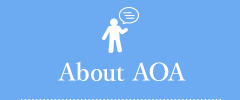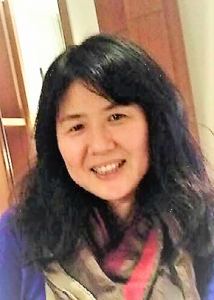Toward the Emergence from Poverty – Promotion of Financial Inclusion and ICMIF Strategy
Case Study of Insurance Strategy in Asia
Hiroko Kowada
Executive Secretary
AOA of the ICMIF
Download (303 KB)
I. Introduction
It has been about two years since I took office of the Executive Secretary of the Asia and Oceania Association of the ICMIF (International Cooperative and Mutual Insurance Federation). Being an insurance-specialized organization of ICA (International Co-operative Alliance), ICMIF is the only international federation representing cooperative/ mutual aid insurance organizations worldwide. The ICMIF Secretariat is located in the UK (Manchester) and has regional associations in the following three regions: the Americas, the Europe and the Asia and Oceania. There are about 280 member organizations from about 75 countries around the world, out of which 10 members are from Japan including National Mutual Insurance Federation of Agricultural Cooperatives (Zenkyoren), National Federation of Workers and Consumers Insurance Cooperatives (Zenrosai), and Japan Co-op Insurance Consumers’ Co-operative Federation (JCIF).
In this contribution, I would like to introduce (i) recent global trend toward emergence from poverty, (ii) ICMIF’s micro insurance promotion activities and (iii) examples of efforts for financial inclusion in Asia. Regarding the above (i), a part of the contents has been reproduced from the textbook for a training course titled “Financial inclusion and poverty reduction” held by JICA (Japan International Cooperation Agency) in August 2017.
II. Recent global trend toward emergence from poverty
In September 2015, the “Sustainable Development Goals (SDGs)” to realize a richer, more comprehensive, sustainable and resilient world was adopted by the member states of the United Nations.
Among 17 goals of the SDGs, the Goal 1 is “NO POVERTY”. The household economy of the poor has characteristics such as 1) low income, 2) instability and unpredictability of income, 3) low asset formation, 4) vulnerability to external shocks such as natural disasters and family diseases, and (5) Expenditures for events such as funerals and marriages being a very heavy burden on households. In such situation, many poor people rely on informal financial mechanisms, not banks, for financial services necessary for managing household economy. It is estimated that 2.2 billion people (as per the World Bank’s Poverty Overview 2015) belong to vulnerable groups in the Poverty Pyramid, who live below 2 US dollars per day. In order to eliminate poverty in all parts of the world, it is considered that the promotion of “accessibility and availability of quality financial services, so that all people can access to and utilize such services conveniently, with dignity and at an affordable cost (hereinafter referred to as ‘financial inclusion’)” has an important role to perform.
After the financial inclusion was taken up for discussion at the G20 Summit in 2009, more than 50 countries had announced the promotion of financial inclusion as a national policy by 2012, and in October 2013, the World Bank Group announced a vision “to enable all the people to receive financial services by 2020”. The G7 Summit also proposed expanding the insurance coverage against the risk of climate change to low-income groups, targeting to spread it to 100 million people by 2020. To deal with these issues, the United Nations requested the IDF (Insurance Development Forum) to serve as the main pillar of the insurance industry. IDF is a public-private partnership led by the insurance industry and supported by the UN agencies. With the World Bank providing the secretariat, IDF officially commenced its activities in 2016 by the leaders of the UN, World Bank and insurance industry. IDF is aiming at building greater resilience and protection for people, local communities, businesses and public institutions that have become vulnerable to disasters and their associated economic shocks, by optimizing insurance and risk management capabilities as well as disseminating insurance for them. ICMIF’s member organizations are also participating in the Steering Committee, the highest decision-making body of IDF; and the ICMIF’s Chief Executive is Co-chairing the Microinsurance Working Group of IDF.
* See Table 1 for major trends relating to financial inclusion and microfinance from the 1950s to date.
| 【Table 1:Major trends on financial inclusion and microfinance from the past to date】 |
| Period | Description of the trend | Cases and events |
| 1950s 1960s |
– Agricultural loans were initiated by state-run development banks, agricultural financial institutions and cooperatives to support the countries that newly obtained independence. – However, many problems remained as large-scale farmers were given preferential treatment, while keeping aside the small farmers who are actually in need of financial service most. |
The Land Bank of the Philippines commenced financing for agriculture and fishery sector. |
| 1970s | Micro credit (hereinafter referred to as ‘MC’) for micro enterprises emerged; “Integrated rural development plans” were implemented in various parts of the world, in which a small-scale credit programme was introduced. | BRAC, a rural development NGO, commenced MC for rural poor together with Mr. Muhammad Yunus (founder of Grameen Bank). |
| 1980s | – The methodology of MC was improved. – With the advent of micro-finance (hereinafter referred to as ‘MF’) institutions that secured profitability, MF market expanded. |
Grameen Bank, a MC specialty bank, was founded in Bangladesh. |
| 1990s | – An idea prevailed that a wide range of financial services, not limited to loans by MC, are necessary, such as remittance from deposits and migrant workers, leasing of small-scale facilities, life insurance and so on. This concept urged a transition to the comprehensive MF including micro insurance (hereinafter referred to as ‘MI’). – MF-specialized agencies and MF-specialized banks were established, which are famous even today. – In 1995, CGAP (Consultative Group to Assist the Poor) was established within the World Bank to secure financial access to the poor in developing countries. |
– MF specialty banks such as Banco Solidario in Bolivia, CARD Bank in the Philippines, K-rep Bank in Kenya were established. – MI-specialized organizations were established in various parts of the world. |
| 2000s | – MF became widely acknowledged, with private banks and investment companies actively entered into MF business. – At the G8 Summit by major developed countries in 2004, the main principles of MF were adopted, taking financial sustainability into consideration. – In 2006, CGAP announced the idea of inclusive financial system, under which “Finance for All” movement started and developed into the present concept of financial inclusion. |
Hatton National Bank in Sri Lanka, which commenced MF business in 1989, drew attention for its high profitability, prompting other private commercial banks to enter MF sector. |
| 2010s | – In October 2013, the World Bank Group announced a vision “to make financial services accessible for all people by 2020”. – Due to the popularization of mobile money accounts with the spread of mobile phones, low-cost and easy-to-access financial services via mobiles expanded their range of use, from baking functions such as deposits, loans, remittances, payment and repayment, to the utility services such as electricity and water supply systems, as well as the subscription to insurances. |
– The mobile money program “M – Pesa” became widely used in Kenya, causing innovation in remittance circumstances. – A small-lot payment and loaning mechanism called “Pay-As-You-Go” using mobile payment system was introduced in various places in the world. |
III. ICMIF’s Micro Insurance Promotion Activities
Micro insurance (hereinafter referred to as “MI”), as per its common definition, is a small-scale and simple insurance which is provided to low-income groups by various entities and is managed in accordance with generally accepted insurance practices.
ICMIF has a long history of insurance promotion activities based on cooperatives and mutual aid, dating back to the 1960s. Currently, ICMIF has Mr. Sabbir Patel, Senior Vice-President, Development, as the responsible person for such activities, and has a technical committee called Development Committee.
Considering that poverty alleviation requires the development of MI projects based on the concept of cooperatives and mutual aid with the emphasis on the value of users, ICMIF decided to implement the “5-5-5 Strategy” in January 2015. This strategy has set a target to disseminate MI to 5 million households not covered by insurance (about 25 million people) in 5 emerging markets in the next 5 years, through the awareness-raising activities and educational activities to promote insurance. Five countries – Philippines, India, Sri Lanka, Kenya and Colombia – have been selected as target countries, and with a key word of ‘inclusive insurance’ (that all people can have access to insurance), the strategy plays an important role in driving global MI promotion activities as a measure to prevent poor and low-income people from being distressed by the risks such as natural disasters, diseases and injuries.
Mr. Sabbir Patel of the ICMIF often says that the goal of this effort is not merely achieving a target figure, but a substantial improvement in the quality of life. According to Mr. Patel, the 5-5-5 strategy aims to build an insurable population through education, empowerment and risk reduction strategies that compliment with the insurance product being offered.
Insisting on the necessity of a holistic approach to evaluate the outcomes of MI, Mr. Patel sent his message to the global policymakers at the IDF’s MI Working Group, saying that “in a region mainly consisting of farmers, for example, the farmers should be able to receive loans, maximize their savings and profit to increase productivity, thereby increasing income, generating employments as a result, and ultimately leading to growth in the region. In addition, risk management is indispensable. Insurance based on cooperatives and mutual aid can reduce the risks in daily family life (diseases, injuries, family’s deaths, etc.), and by integrating it with the stabilization and expansion of agricultural income, it can enhance people’s ability to realize poverty reduction. This way of thinking can be applied not only to agriculture but also to other industries as a source of income. ”
IV. Examples of efforts for financial inclusion in Asia
Among the members of the Asian region participating in ICMIF’s “5-5-5 Strategy”, I would like to introduce the following two cases, both of which I have visited and observed.
(1) CARD Group (Philippines)
A. Outline of the organization
CARD-MRI (The Center for Agriculture and Rural Development – Mutually Reinforcing Institutions) was established as a social development fund in 1986, with the goal of eradicating poverty the Philippines and protecting the lives of the Filipinos. As of May 2016, it is working on improving the quality of life of socially and economically underprivileged females and their families in the Philippines, through its 14 institutions (MF-specialized agencies, development banks, insurance agencies, social development business organizations, etc.).
B. History
In December 1986, Dr. Jaime Aristotle B. Alip, the founder and current President of CARD, led 15 rural development practitioners and established a social development fund named the Center for Agriculture and Rural Development, Inc. (CARD, Inc.), which is the predecessor of CARD-MRI.
In 1989, CARD modelled after the solidarity liability system of the Grameen Bank in Bangladesh, a famous MF-specialized bank, and started implementing it with modifications in accordance with the situation in the Philippines. After that, CARD started the Landless People’s Programme in 1990.
In July 2012, a community development organization was established with the vision of working on social development projects which will contribute to the nation-building of the Philippines. The CARD’s community-based activities on education, healthy living and the environment have been integrated under this new organization.
C. Insurance business
CARD MBA is an organization established in April 1994, eight years after the establishment of CARD, Inc., starting with providing insurance for the credit users of CARD-MRI, to cover their payment in case of emergency. In addition to credit life insurance, it offers life insurance, annuity insurance, etc. Recently, through business alliance with property insurance organizations, it provides a wide range of comprehensive protections including damage insurance for buildings and automobiles.
According to the data released by the Insurance Commission, a public institution of the Philippines, 26.6 million poor people in the country are subscribing to MI (as of the first quarter of 2017). Having a total of 15.15 million insured people (as of November 2017) and providing approximately 60% of domestic MI, CARD MBA is the largest MI organization in the Philippines.
D. Impact on the Government and regulatory authorities
In recognition of the achievement of the CARD group for poverty reduction, it was awarded the 2008 Ramon Magsaysay Award, an award widely known as the Asian version of the Nobel Prize. As a result of this, many Mutual Benefit Insurance Associations (MBAs) for MI have taken root in the Philippines.
There was a concern on MI from the viewpoint of consumer protection and so on because it had been unauthorized until 2006. However, after the Government of Philippines issued a notification on insurance premiums, mechanisms, contract documents, MI has been improved to suit the actual circumstances of the subscribers, thereby increasing the credibility among them.
In 2010, the Government started encouraging and promoting MI while clarifying the policy on subscriber protection, to support MI activities through the introduction of appropriate regulations such as requirements for MBA establishment, setting method of premiums and insurance amounts, and qualifications for agents. With the above background and led by CARD MBA, which constantly advances innovation in product development and service providing, MI in the Philippines is growing significantly.
E. Innovative and unique efforts
The three innovative and unique approaches of CARD MBA are as follows.
a) Organization for the females, by the females
The organization itself was established to protect the lives of females and their families in a harsh environment, and more than 90% of the executives including Ms. May S. Dawat, the CEO, are females. In addition, the age group of executives and staff is young.
b) Education for members
For each district, CARD holds a small-scale member gathering named Center Meeting on a regular basis, at borrowed spaces in the houses or garages of members. At the Center Meeting, the members and the staff of CARD chorus the oath, and the meeting is utilized as a place to learn procedures of the various services provided by the CARD Group (repayment of loans and savings, subscription to insurances, payment of insurance premium etc.), to obtain financial and business knowledge, and to learn about various risks in health and living, the countermeasures for such risks as well as countermeasures against disasters. Moreover, the meeting serves as a place to raise awareness as a member, to foster awareness of each member not to tolerate wrongdoings, to deepen consciousness of solidarity among members, and to educate them on morality view such as faithfulness.

c) Early payment of insurance money/ claims
As CARD is an organization with a mission to ensure the provision of necessary fund when the poorest people face unfortunate events, it focuses on the early payment of insurance money/ claims as an important task. In the case of Typhoon Hayan (No. 30) in 2013, the “1-3-5” Strategy on insurance claims (a strategy to complete the payment within 1 day, 3 days, or 5 days) was implemented. As a result, CARD made a track record of the early payment of insurance claims (95% of payment due was settled within 1-3-5 goals).
In 2017, the organization further improved this and announced a new strategy called “8-24” aiming at paying insurance claims from the members within 8 to 24 hours, which is currently being implemented.
(2) SANASA (Sri Lanka)
A. Outline of the organization
Cooperative movements in Sri Lanka started in 1906. SANASA (meaning “savings, credit and cooperatives” in Sinhala), through the promotion of a ‘society’ (a basic unit organization), is implementing its activities in various fields such as bank, insurance, education and regional development (construction), with the aim of realizing a civil society in which all people can enjoy an economically independent life. SANASA movement has now developed to the SANASA Federation, with about 8,000 member societies and about 1 million member people, having an organizational structure consisting of 8,023 village-level societies, 48 district-level associations of societies and 1 national-level supervisory organization.
SANASA societies are mainly based in rural areas, and most of them are small groups of about 600 members.

B. History
At the end of the 1970s, as Sri Lanka shifted from closed economy to open economy, an international survey on poor farmers and low-income group, who had not been benefited from the open economy, was conducted in Sri Lanka. Dr. P. A Kiriwandeniya, current Chairman of the SANASA Federation, also participated in the survey. The results of the survey led to a conclusion that the development of cooperatives is an effective measure for improving people’s lives in the areas where public services is not sufficiently reachable, and Dr. Kiriwandeniya himself decided to start village development activities through cooperatives.
In 1978, district-level SANASA associations were established, and in 1980, a national-level supervisory organization of the SANASA Federation was launched. In the microfinance (hereinafter referred to as ‘MF’) business, SANASA’s banking business began in 1986, followed by its insurance work commencing a little later in 1992. Having been recognized for its cooperative projects and various services, SANASA was ranked as a national development partner of the government of Sri Lanka in 2000.
In recent years, regional development projects (construction) have been added to SANASA’s activities as a new initiative. Under this initiative, employment opportunities have been generated; hospitals and other facilities have been constructed in the areas where such facilities had not existed before; quality of life of the residents has been improved; the profits earned by the development projects have been distributed back to the area, and efforts to emerge from poverty in a comprehensive manner have been made at the village level.
SANASA places particular emphasis on the following three points in order to achieve its ultimate goal of “delivering Economic Justice (to enjoy the benefit of economy in fair manner) to all people”. They are: “organization of the activities (strengthening organizational capacity)”, “education” and “engagement in economic activities on own initiative”. Regarding the education, SANASA initially commenced a learning programme for its members and staff at Dr. Kiriwandeniya’s own residence. Now the venue has moved to the SANASA University with a vast campus, which has developed so far as to be managed by the members themselves.
C. Insurance business
SANASA’s MF business consists of loans, credits and insurances, which are managed by organizations such as SANASA Development Bank and SANASA Insurance (life, non-life), and provide services for the members of its society.
SANASA’s insurance business was launched in August 1992 as a mutual aid system that covers funeral expenses at the village level. Since then, it has been developed to implement life insurance, life and annuity insurance, educational insurance, credit life insurance (with loan function), medical insurance, fire insurance, livestock insurance and so on, in a manner to cover the fields where the administrative services do not have sufficient outreach.
Dr. Kiriwandeniya regularly educates the society members about the importance of “preparedness”, raising wider interest in insurance among them. Through such efforts, he also educates the members on the idea that ‘education for children will enrich the country in the future’, resulting in their high interest in educational insurance. In addition, people’s interest in the insurance with annuity is also high in Sri Lanka, where there is no public pension scheme except for civil servants.
Recently, in order to prevent poverty due to extreme weather changes, SANASA started providing agricultural insurances based on weather index (see Table 2), along with weather-related education for the members. MI, which is small-lot insurance with simple procedures, has been spreading throughout the country as the needs for MI spread.
| 【Table 2: Summary of agricultural insurance based on weather index】 |
| Contents of insurance | Index-based insurance corresponding to weather change |
| Contents of Protection | Insurance money is paid to subscribers when there is an extreme change in the raining pattern, such as drought and flood, using the data on weather-related value observed during the past period as an index. |
| Target crops | Tea, Paddy |
| Devices for dissemination | – Education to the members (to increase interest and concern about the relationship between weather and crops) – Application for subscription made possible from mobiles – Swift payment of insurance money |
| Future tasks | – Installation of more number of Weather Stations (weather observation facilities) to enhance capacity to collect and organize relevant data – Improvement in the accuracy of analytical model to minimize deviations between weather index and actual damage by using advanced expertise – Increase in the varieties of target crops |
 |
| Photo 3: Unveiling ceremony of Weather Station No. 1 at SANASA University, Right: Dr. Kiriwandeniya, SANASA, Center: President Yanai, Zenkyoren |
D. Utilization of technology adapted to modern society
Although SANASA is an organization which is mainly based on activities in rural areas, it is constantly improving its system so that the dissemination, underwriting, payment and sales management of insurances can be carried out using the technologies adapted to modern society.
Recent examples of such efforts are as follows.
a) Installing a quotation generating function in the mobile terminal has enabled the sales staff to prepare quotation on-site, in front of their customers.
b) Introduction of “Ez (easy) Cash” system:
In partnership with the largest mobile phone company in Sri Lanka, SANASA introduced a system that allows subscribers to pay insurance premium by mobile phone without having to go to banks or insurance offices.
c) By granting the Sales Department with the authority to review the eligibility of applicants and to make decision on the approval for subscription, the number of back office staff has been reduced, enhancing a field-oriented staff organization under which more number of staff can be allocated for sales activities outside.
d) Introduction of sales activity reporting system utilizing mobile phone application:
This measure has enabled the sales staff to reduce the time to return from the visited place to the office only for the purpose of reporting, thereby securing more time to spend for sales activities and communication with the members.
As described above, SANASA, aiming to realize a civil society where all people can live an economically independent life, has been working on poverty reduction by providing alternative services to the areas where public services are not sufficiently reachable, through the education for people about the importance of preparing for risks utilizing insurances, and through securing an environment where people can have easy access to financial services.
(3) Common features of the two organizations
When comparing the two organizations introduced above, common features are found between them, that both organizations have a strong leader with a strong will and executive ability for supporting local people to emerge from poverty and to improve their quality of life. In addition, both organizations have the mission of improving the quality of life of their members and local residents, by providing comprehensive financial and other services in impoverished areas where commercial financial services or governmental services are unreachable. Once people emerge from poverty, both organizations provide various supports to maintain and improve the situation, such as offering employment opportunities, nurturing economic independence, providing education to improve morale and to build risk management capacity, and introducing technologies adapted to modern society. Through these supports, both organizations are working hard to develop an environment where everybody has an easy access to financial services. Furthermore, they also have an operational concept in common that the profits obtained by the projects shall be distributed back to local communities.
| 【Table 3: Common features of the two organizations】 |
| Item | CARD (Philippines) | SANASA (Sri Lanka) |
| Organizational form | A MF organization established as a social development fund for agricultural and rural development | Cooperatives (at village, district and national level), having a development bank, an insurance organization, a regional development organization, etc., as group organizations |
| Mission and purposes | To improve the quality of life of females and their families in the Philippines who are in social and economic hardships, through MF and community-based social development projects | To develop cooperatives in the fields or regions where public services do not have sufficient outreach, with the aim of realizing a civil society where all people can live economically independently |
| Organizational leader | Dr. Jaime Aristotle Alip | Dr. P. A. Kiriwandeniya |
| Contents of services | MF (loan, savings, insurance), social development projects | MF (loan, savings, insurance), education, regional development (construction) |
| Activities on which the organization is putting special emphasis | Education for members (support for independence) (Center Meeting, etc.) |
Education for members (support for independence) (SANASA University) |
| Area that the organization is always working on to devise a means of improvement | Early payment of insurance money | Advancement of insurance services as well as various other services utilizing the latest technology |
V. Conclusion
If a service is offered to a user in comprehensive manner and not in fragmented manner, the user can improve the quality of life efficiently and effectively. From this point of view, it is considered that MI, when functioning as one of the comprehensive services offered by cooperatives and others, will serve as a shortcut to getting people and the region out of poverty as well as improving the quality of life.
During the two visits conducted as AOA Study Tour, both or the former and the present Chair of the Asia and Oceania Association of the ICMIF and President of Zenkyoren, namely Mr. Tamotsu Shozui (visited CARD in the Philippines in August 2016) and Mr. Fumio Yanai (visited SANASA in Sri Lanka in November 2017) respectively, have expressed their impressive comments as follows.
“CARD’s Center Meeting activities are the very origin of the cooperative movement. We have done similar activities in Japan, too.”
“SANASA’s activities remind me of the activities which we used to do in the past. They made me recognize once again the importance of education on cooperative movement to young people.”
Born in the 1970s, it seems quite natural to me for agricultural cooperatives to exist in Japan. However, behind it are the wishes, wisdom and efforts of the predecessors toward improving the lives of people, just like the current Philippines and Sri Lanka, who have worked hard to develop cooperative organizations with full-fledged functions as we see today. I was given an opportunity to realize this background, fortunately, through the work presently designated to me.
As organizations such as CARD and SANASA change the quality of life of more people, they will eventually become large organizations like agricultural cooperatives in Japan, eradicating poverty in various parts of the world including the Philippines and Sri Lanka. Such situation, I believe, will certainly come in near future. And I sincerely hope that the realization of such situation will be made as early as possible through our activities such as ICMIF’s 5-5-5 Strategy.
Finally, I would like to express my appreciation to Japan-Cooperative General Research Institute for giving me the opportunity to introduce wonderful efforts toward the emergence from poverty, and to all the stakeholders who extended cooperation for writing this report.
References I
- Training textbook, JICA (Japan International Cooperation Agency) Training Course on “Financial inclusion and poverty reduction” (August 2017)
- World Bank (Poverty Overview 2015)
https://www.worldbank.org/en/topic/povety/overview - “ICMIF’s new development strategy will put the message of mutuality into microinsurance”, ‘Voice’ Vol.82, May 2015, p.16-17, ICMIF
- “ICMIF’s mutual microinsurance initiative will help provide protection from climate change risks”, ‘Voice Vol.86’, September 2016, p.12-13, ICMIF
- CARD-MRI
https://www.cardmri.com - ICMIF news (January 18, 2018) “CARD MBA in the Philippines launches new policy to pay claims in under 24 hours”
https://www.icmif.org/news/card-mba-philippines-launches-new-policy-pay-claims-under-24-hours
References II
ICA (International Cooperative Alliance)
Established in London in 1895, it is an organization with the aim of developing cooperative movements globally under the spirit of mutual aid and democracy. As of November 2017, it consists of 304 organizations in 105 countries worldwide.
As the world’s largest NGO with 1.2 billion members, it is an advisory organization of the United Nations Economic and Social Council as well as a registered organization with a right to submit proposals, along with the European Union (EU) and the International Federation of Red Cross, at UNESCO, UNICEF, ILO, FAO, etc.
ICMIF (International Cooperative and Mutual Insurance Federation)
Established in 1922 as one of the specialized agencies of ICA, it contributes to the development of cooperative insurance and mutual aid business at global level, by providing information and various services to affiliate.
As of October 2017, it consists of 280 organizations in 75 countries in the world.
AOA (Asia and Oceania Association of the ICMIF)
Established in 1984 as one of the regional associations of ICMIF, AOA is an organization operating in Asian and Oceanian region under ICMIF, in order to support the development of cooperative insurance movements in the region.
As of October 2017, AOA is composed of 49 organizations in 14 countries. Mr. Fumio Yanai, President of Zenkyoren is currently serving as the Chairman, and Zenkyoren is acting as the Secretariat.
https://www.icmifasiaoceania.coop/
Hiroko Kowada is Executive Secretary, Asia and Oceania Association of International Cooperative and Mutual Insurance Federation (ICMIF). Also, she is Manager, Cooperative Collaboration Division, Zenkyoren (National Mutual Insurance Federation of Agricultural Cooperatives), Japan. The author’s institutional affiliations are provided solely for identification purposes. The views expressed are not necessarily those of AOA or Zenkyoren. This is for information purposes only and should not be construed as an offer to buy or sell any investment product or service.





